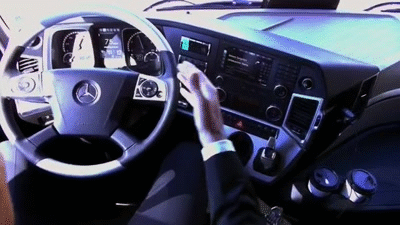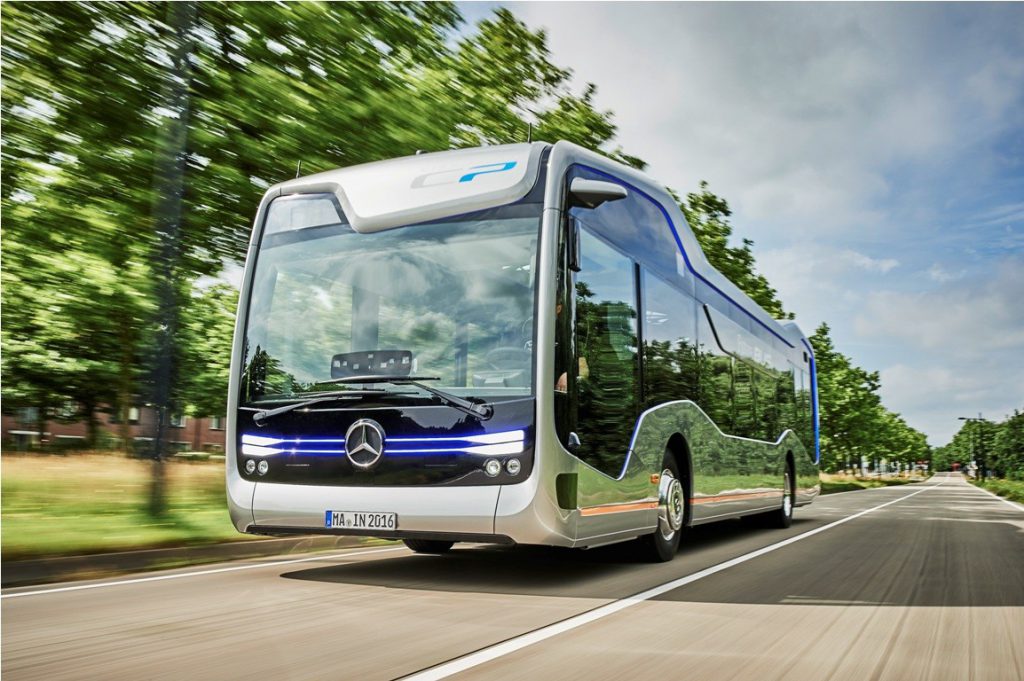Mercedes-Benz’s first autonomous bus, the Future Bus, has just made its first public journey on a Bus Rapid Transit (BRT) route in Netherlands on Monday.
The journey took its riders 20km from Amsterdam’s Schiphol airport to the town of Haarlem, and was a demo of how the Bus would navigate real-time traffic using CityPilot technology.

CityPilot technology is Mercedes-Benz’s version of how autonomous vehicles would work, and uses radars, cameras and GPS systems to recognise traffic lights and react to them; recognise obstacles like pedestrians on the road and brake autonomously; and most importantly, stop and open its doors at its assigned stops.
Said Wolfgang Bernhard, board member of Mercedes-Benz’s parent company Daimler AG:
“[Future Bus] makes public transport safer, more efficient and more productive […] More people can travel from A to B quickly, punctually and in comfort, to the benefit of all: bus operators, bus drivers and passengers.”
CityPilot technology is nothing new, and the Future Bus was based off their autonomous Actros truck powered by HighwayPilot technology which were unveiled two years ago. The technology the bus is using is the product of “substantial further development”.

The Buses have a maximum speed of 70km/h (which is considered to be a relatively safe speed on Singapore roads), and can also act as a data collector for its city, spotting wear and tear on roads and reporting that data back to a central computer.
How Does It Look Inside?
The Bus would be around 12 metres long, and is based on the Citaro (yes, the ones we ride!), but its design is said to be a “completely new departure”.
Based off city architecture and parks, passenger compartments are divided into three zones for different lengths of stay, with seats arranged along the walls. Grab rails and lighting also resemble leaf canopies and trees respectively.

Large monitors located in the middle of the bus are also meant for operators to relay information and entertainment to their passengers.
For those running low on battery, there are also wireless charging surfaces available on the bus.

How well that would work when the bus is packed to the brim is another issue though.
Bus Drivers Are Still Needed
If you’ve noticed from the photo above, the buses are not completely driverless.
According to Daimler AG, “the driver does not need to operate the accelerator or brake at all, and only needs to take the wheel in accordance with traffic regulations when there is oncoming traffic. However, the driver is able to intervene at any time and immediately take control if required.”

What this means is that bus drivers will not lose their jobs, instead, their jobs will actually be made easier!
The CityPilot technology also reduces the possibility of human error, and is poised to drive smoothly even in the event of rush hour – a definite relief from the jerky journeys were sometimes get from our bus rides.
Status Of Self-Driving Vehicles In Singapore
On Singapore roads, we have yet to see autonomous vehicles being used here.
However, this might soon change with startup nuTonomy’s release of self-driving taxis in 2018.

The last we heard, they had raised US$16 million in funding, and have been testing their R&D fleet in One-North, Singapore’s R&D and high technology cluster.
They are also the first private company to get approval from Singaporean government bodies to test their cars on public roads.
Said Kin Keong Pang, Permanent Secretary of the Ministry of Transport, “We are inviting companies and research institutions to test-bed their technology and concepts here, in real-life, mixed-use traffic conditions […] We are contributing financial resources in these partnerships and we are able to fast-track regulatory and other administrative approvals, and get the trials and test-beds up and running quickly and with minimum fuss.”
SMRT has also been reported this year to have gotten involved in developing automated vehicles through a joint venture with Netherlands-based automated vehicles company 2getthere. One example of how the vehicles would be used is that they will take commuters from their homes to bus interchanges and MRT stations.
Will Our Bus Services Adopt This?
In a report released by LTA in 2014, there seems to be a generally positive consensus that autonomous vehicles are the way to go.
Improved road safety, optimisation of land needed for transport, mitigating manpower needs for operating buses and mobility for elderly and disabled were some of the benefits self-driving vehicles would bring to Singapore and Singaporeans.
However, regulatory concerns and the occurrence of unexpected situations when the technology backfires were also pressing concerns that need to be addressed.
Understandably, the concept of an autonomous bus (albeit with a driver as ‘backup’ in the Future Bus) leaves much room for the imagination of the possible accidents that could happen when we completely place our trust in this technology.
The recent Tesla autopilot crash also simply shows us the possibility that these self-driving vehicles could actually backfire on us, albeit being cited to be safer than human-operated ones.
If Singapore does decide to adopt the Future Bus though, I would think (and hope) that the Singapore Government and LTA does do as many test-runs as it takes to ensure that it brings us safer journeys as compared to dangerous ones.
Until then, you can see the Future Bus in action here:














